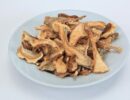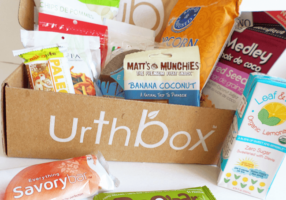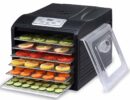Butternut Squash is a seasonal vegetable that is a healthy addition to anyone’s diet! Especially for Vegans. It is full of nutrients and vitamins that are essential to optimal health. Additionally, it is low in calories so you can enjoy guilt-free.
What Does Butternut Squash Taste Like?
Butternut squash tastes like a mixture of Sweet Potato and Pumpkin but has a softer texture. It has a lovely sweet taste but is best in savory dishes.
What is the Best Way to Cook a Butternut Squash?
This has been the point of debate for a very long time. For me personally, I love to oven-roast my Butternut Squash. The best way that I have found is to cut into cubes, drizzle with olive oil roast for 40 mins on 350° F (180° C), then I sprinkle a mixture of diced garlic and ginger, then return to roast for 10-15 mins, yum!
Other ways to cook your Butternut is to boil (best for curry), mash it, cut into pieces and grilled to go with pasta or rice.
If you would like some more inspiration, have a look at these recipes:
If you like the look of these butternut squash recipes, we’ve found loads of other amazing recipes to spice up your kitchen repetoire. Check out our Ultimate Vegan Cookbook guide
If you are more of a video person, check out this recipe below that we made last night.
What Are the Health Benefits of Butternut Squash?
You would be surprised how beneficial butternut squash is for your health.
High In Anti-Oxidants: From recent studies it has been identified that Butternut provides a high source of antioxidants that other foods would find very hard to match.
Antioxidants aren’t its only claim to fame, it is also very high in Vitamin C!
Studies also suggest that Butternut Squash has anti-inflammatory properties.
People who suffer from diabetes will be happy to know that Butternut Squash will help to regulate blood sugar.
Due to the high level of antioxidants and anti-inflammatory compounds, there is a strong connection that its can assist keeping the body free of cancer.
If you would like more information regarding the Nutritional Profile of the Butternut Squash, please reference WHFoods.com.
Is Butternut Squash a Fruit or Vegetable??
While it is commonly thought of as a vegetable, Butternut Squash is technically a Fruit.
How to Choose the Perfect Butternut Squash?
Butternut squash has a nice and thick skin that protects it. When you pick it up you should feel that it is very heavy for its size. It should be a lovely and even yellow-orange color.
You should examine the exterior to ensure that there are no blemishes/bruises, signs of rot, signs of insects. During transportation, butternut squash is sometimes frozen, so you should check for signs of frostbite. Also, as mentioned, they are very heavy so ensure that there are no soft spots anywhere that may have been caused by being stacked at the bottom of the crate.
How to Store Butternut Squash?
One of the main advantages of your butternut squash is its long shelf life, often up to several weeks.
Ensure that you place it is a dry and cool place out of sunlight. You can take it one step further and store in a timber crate that has light padding. Occasionally turning your butternut will ensure that one side does not perish from being stored on for too long.
What is the Best Way to Peel and Seed a Butternut Squash?
One disadvantage of the thick skin that keeps our butternut for so long is that it can be hard to prepare for cooking.
In our household, we have found the best way to peel is to first cut the top and bottom to remove the base and root.
Then, using a sharp kitchen knife, cut the butternut into 10cm prices lengthways. Take each piece and rest on the stable flat side. Angle your knife down slice off the skin taking care to not cut yourself.
To remove the seeds, I simply take a spoon and scoop them out and away. Just like pumpkin seeds, they are a healthy and delicious snack. To prepare them, simply roast for 15-20 mins and enjoy!
If you would like to see some images that illustrate this process, please see our friends over at CoolThink.
Do you use butternut squash in your meals? what’s your favorite recipe using this awesome vegetable? Let us know in the comments below.
![]()














